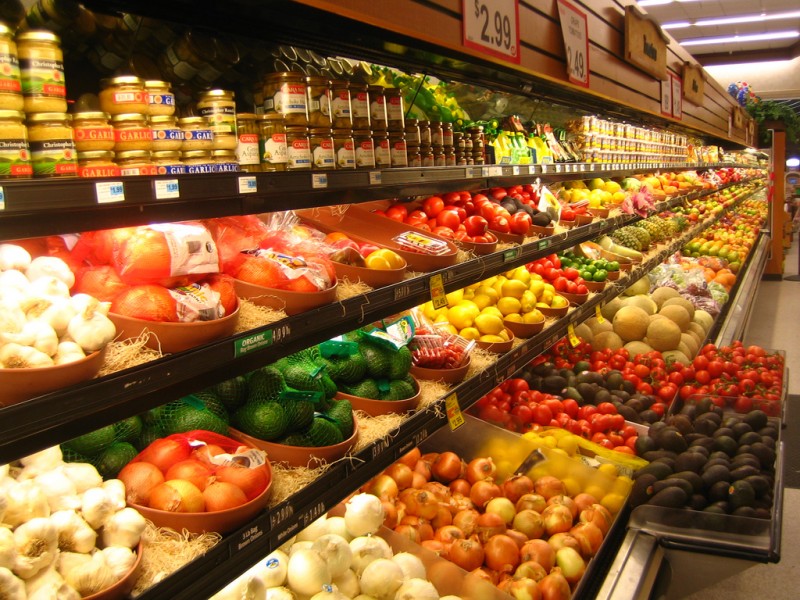This article and a radio report by Monica Campbell for The World originally appeared on PRI.org on February 4, 2015 and is republished as part of a content-sharing agreement.
In the produce aisle of a supermarket in Madera, in California’s rural Central Valley, Francisco surveys the fruits and vegetables on display in the produce aisle. He’s 40 years old and stocky. He's also undocumented, and he asks to use his first name only.
For years, he’s picked produce in Mexico and along the West Coast of the United States. He’s good at it, but there’s one thing on display here that he wouldn’t mind never harvesting again: the tomato.
It's the crop that “leaves you the most tired,” he says. The tomatoes are heavy and you have to squat all day to pick them. You also have to inspect each tomato to make sure the color is even. It’s hard to work fast.
Plus, they’re messy. “Oh man, you leave the fields dirty. The tomato’s green leaves stain everything and it’s muddy work,” Francisco says.
Then there’s the avocado — also tough. Francisco picked them in Mexico. When he looks at them, he thinks heavy but delicate.
“You have to make sure you pick them at just the right time, when they’re not too mature or too ripe,” he says. “And if you drop them, they’re ruined, even if they still look good on the ground.”
He remembers how much the avocados weigh once they fill up the picker’s bag that's harnessed around the shoulders — a full bag is about 50 pounds. And once it's filled, you then have to lean over slowly, dropping the avocados in the bin without damaging them.
Next, Francisco spots the onions, white and smooth.
“The onion is complicated because you have to hunch down, digging them up from the ground,” he says. You must also remove the onion’s beard, or la barba. “It’s that dark stringy part at the top of the onion,” he says. “We use small clippers to take them off, and you have to be careful not to damage the onion. It’s repetitive and leaves your hands sore. I would exercise my fingers at night to make sure that my hands would be ready to work the next day.”
Which would he rather work with — the avocado or the onion?
“The avocado,” he says right away. He’d rather be on a ladder all day than squatting on the ground between rows of crops. But a fall off the ladder — up to 30 feet high — can be serious.
Then Francisco sees what he really wants to talk about: strawberries. He has mixed feelings about them.
He says the tricky part is to remove the strawberry’s stem and leaves without damaging the berries. And each piece of fruit must be inspected to make sure it’s not too green. But he’s picked berries in Washington state for many seasons and mastered it. He got to the point where he could pick with two hands at once, gathering more than 50 pounds of berries an hour. Fast work means earning a bit above the hourly minimum wage — $7.16 when he worked in Washington.
But fast work in the berry fields, six days a week, has a price.
“You’re sitting, squatting all the time. I don’t like that,” Francisco says. Legs and knees get sore, and he can’t do the work at the moment; he was injured in the fields. But he says he’d pick again.
“I’m proud of the work,” he says. He steps back and looks at the produce aisle like an artist in front of a painting. He likes to see how uniform all the produce looks, even though most of it is too expensive for him to afford. But he knows all the hard work that goes into making it look just right.







